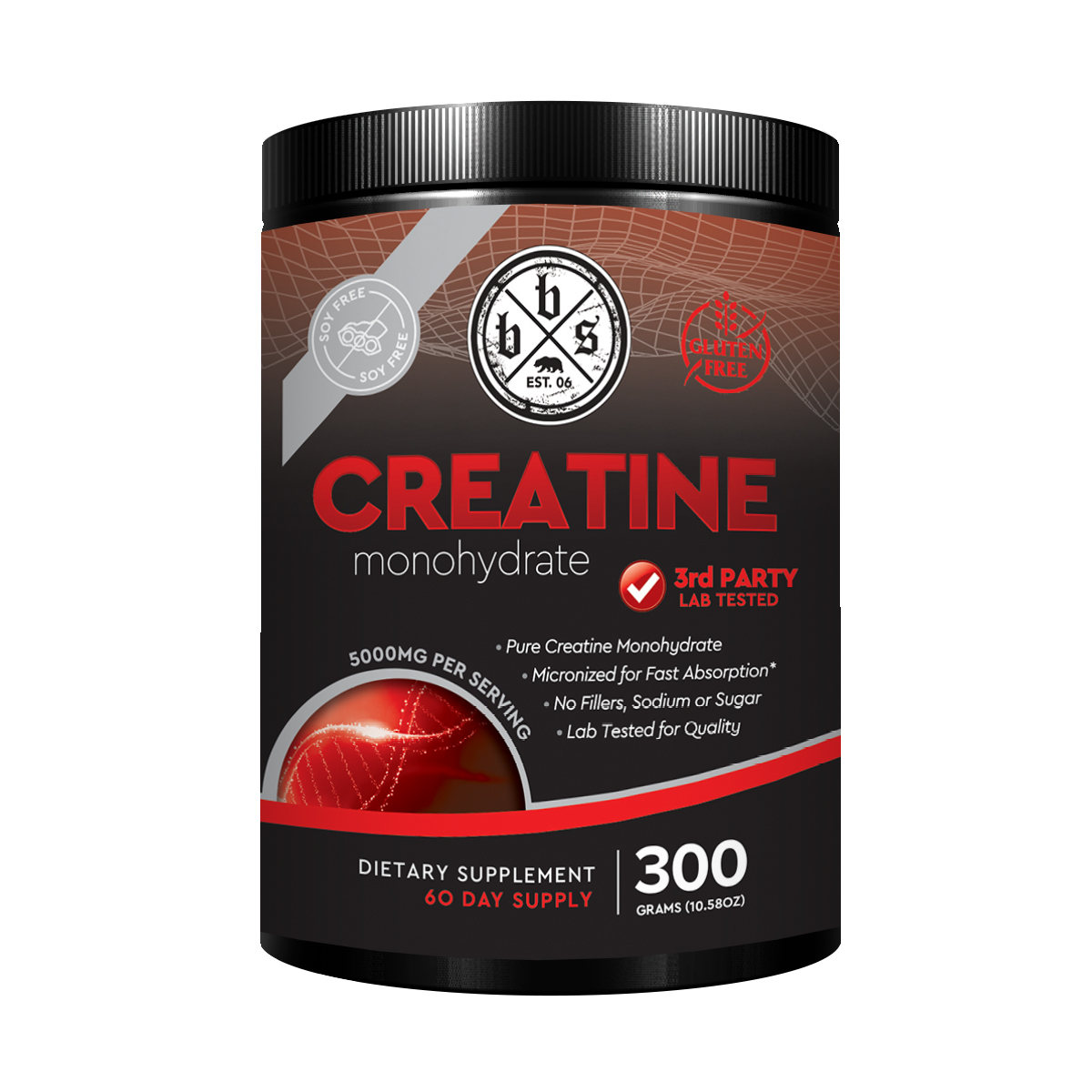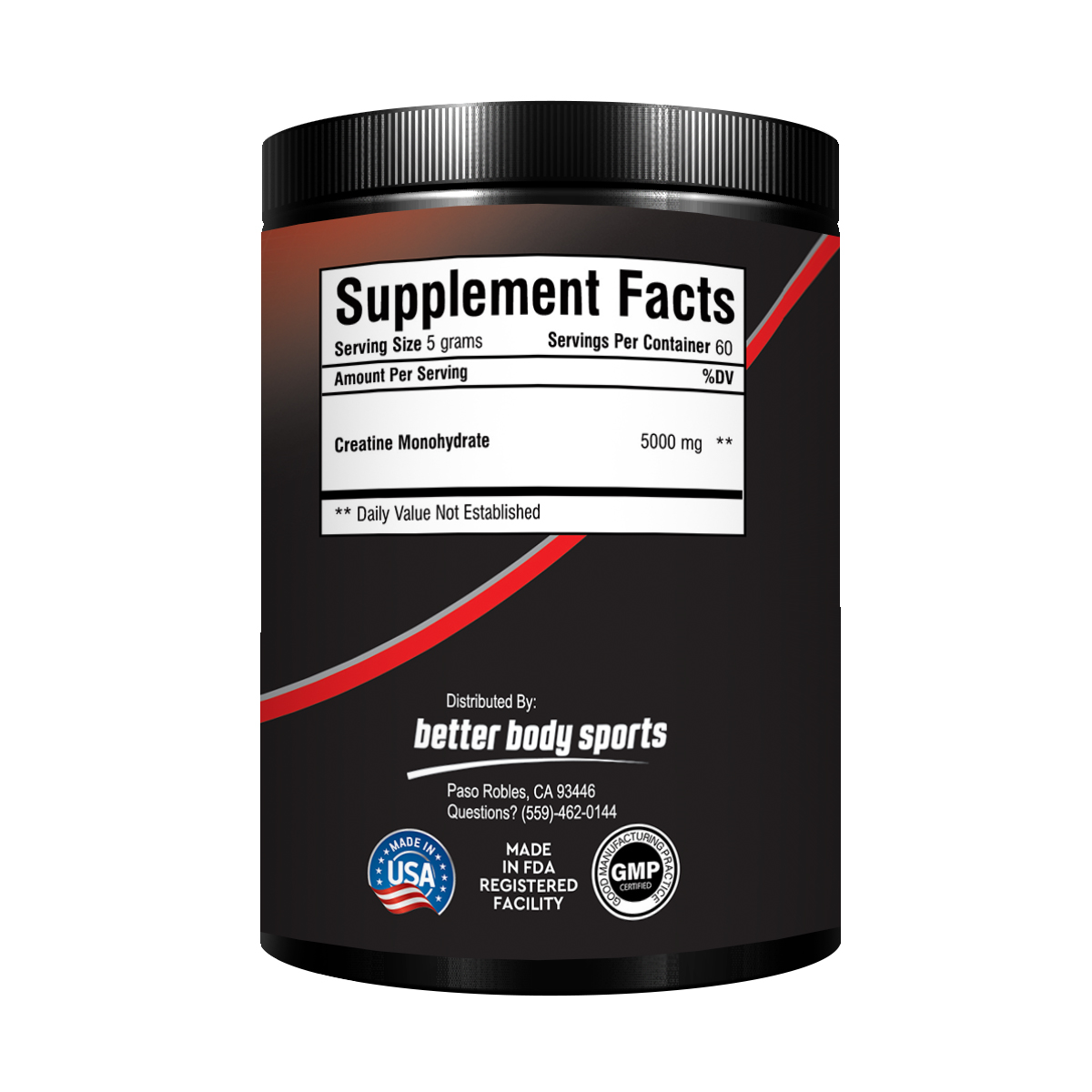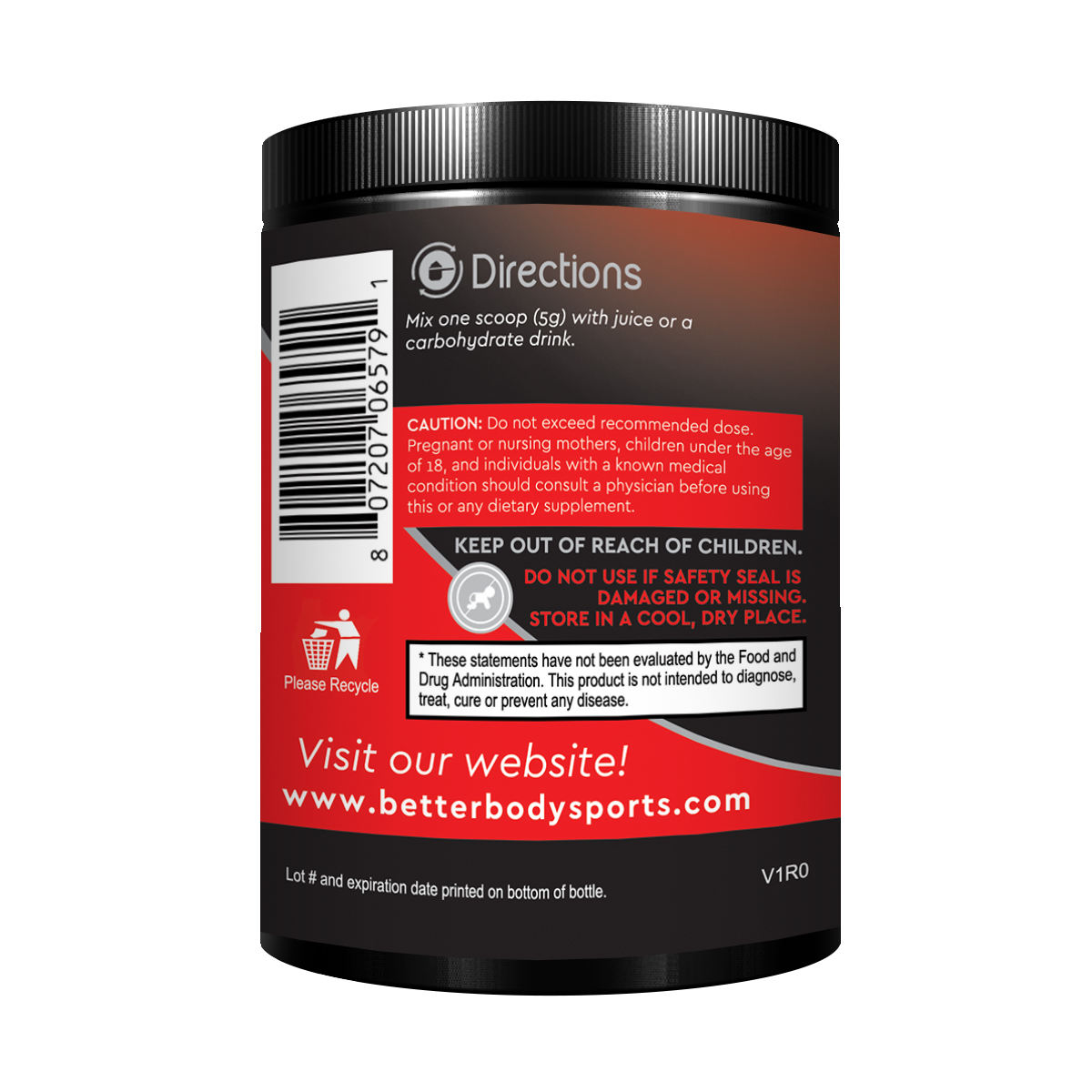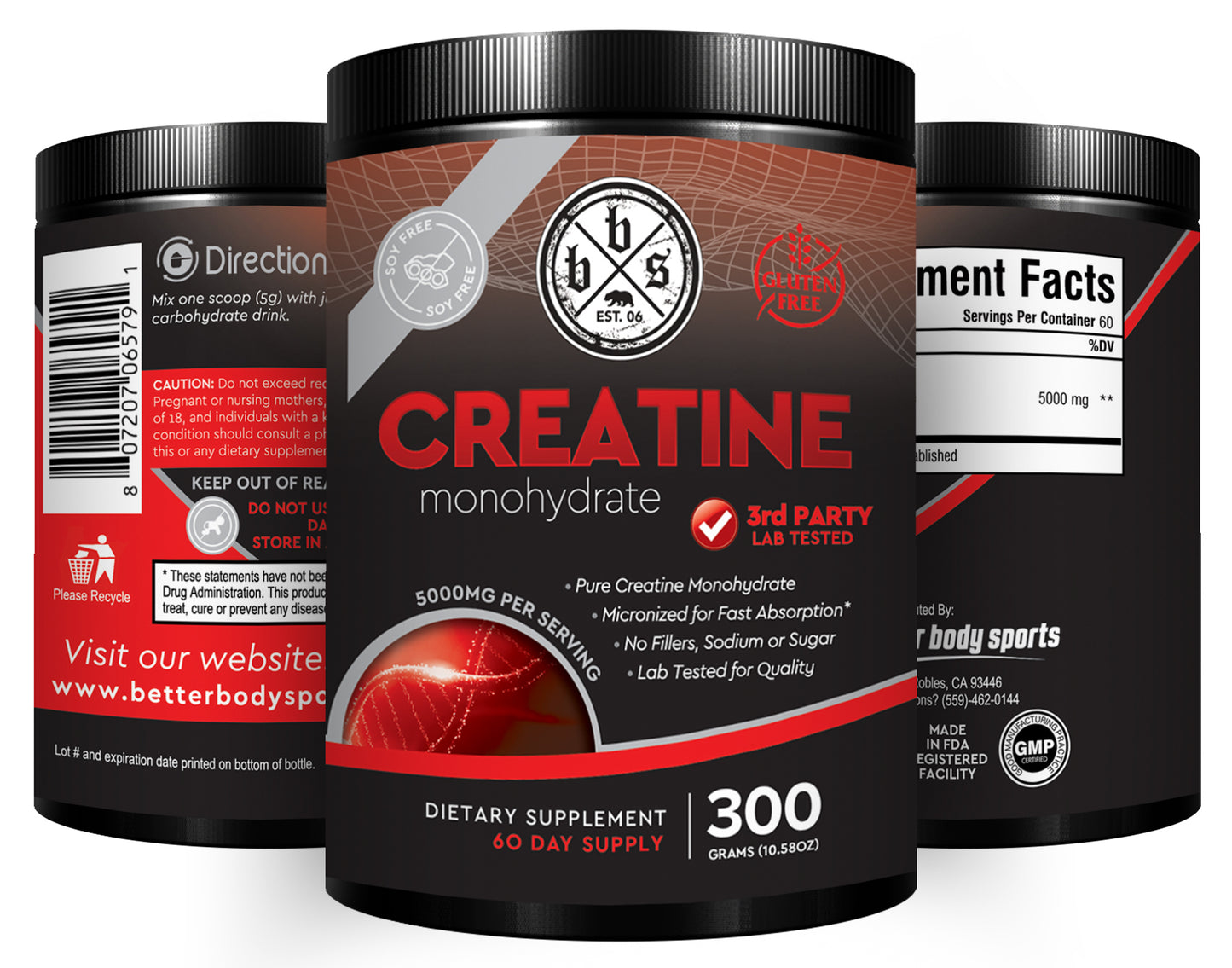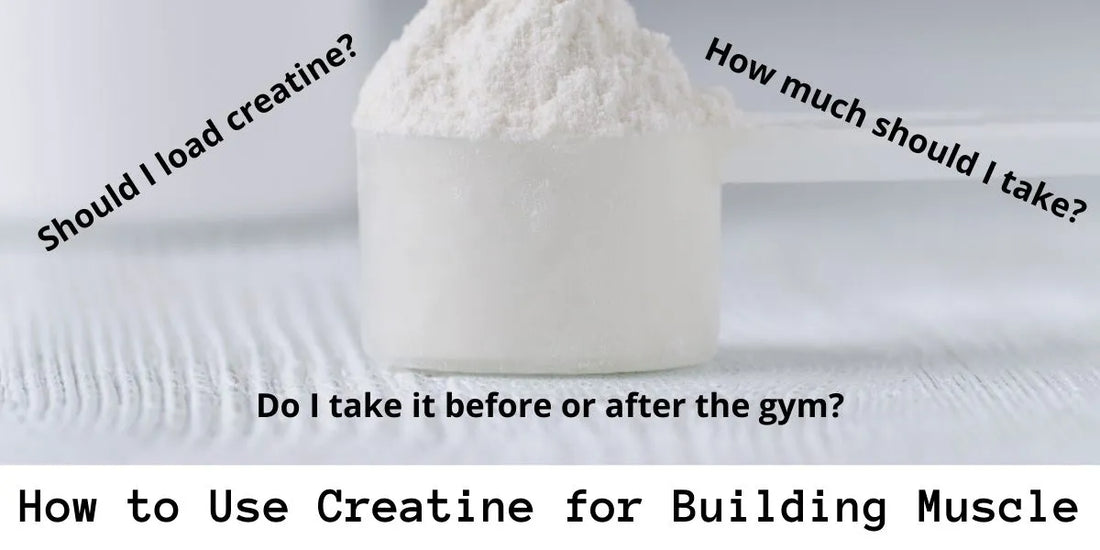
How to Use Creatine for Building Muscle
Share
How to Use Creatine for Building Muscle
At this point, almost everyone has heard about creatine. This legend in sports nutrition has had both good and bad opinions about it over the years. Like many others, you may have experienced one of the following…
- Your parents confused creatine monohydrate for steroids and forbid you to use it.
- The news told you how a creatine supplement would damage your kidneys and cause potential death.
- A skinny salesperson sold you a creatine powder, telling you it was the answer to getting swole.
- Your friends told you that creatine is a waste of money and won’t help you at all.
These days, it seems like the opinions about creatine supplementation in order to build muscle is as controversial as politics. Yet, at the same time creatine is “old news” and many have forgotten about its potential benefits for building muscle mass.
The mention of a straight creatine supplement brings them back to the days when they had no clue how to lift weights or eat right. Finding out that massive muscle growth doesn’t happen as fast as we thought, led us to the nearest supplement store. It is here where a sales associate told us that creatine supplementation was the answer to all of our skinny problems.
With all these opinions, beliefs, and experiences, we have a hard time nailing down the truth about creatine. The fact is,
- Creatine is one of the most affordable muscle building supplements you can buy.
- Creatine has a long list of supporting scientific research to build muscle.
- Creatine has potential benefits that go beyond building muscle.
If you have a goal of increasing muscle size, creatine should be towards the top of the list. In fact, if you hope to prevent muscle loss as you become older, creatine should still be a front runner.
Creatine and its Effects on ATP
If you want experience serious muscle growth, then you need to train hard. We must train a muscle at its full capability to create an adaptation process where the muscle becomes resilient to such a of stress. Creatine helps you “raise the bar” so to speak and creates a new standard of muscle strength to work from.
Creatine increases adenosine triphosphate (ATP) which is your muscles most immediate energy source. By increasing the amount of ATP, your body can squeeze out more potential reps than it can without creatine supplementation. The additional reps performed will cause a further need for the muscle to adapt. The potential result is more lean muscle mass growth.
Cellular Hydration
If you train hard, you need to recover harder. This is a truth that more people need to listen to. If you want your muscles to grow, as mentioned, we must allow for the adaptation process to occur. At high intensities of resistance training, we need adequate amounts of time for full muscle recovery. During that time, the muscle needs to receive nutrients that repair skeletal muscle from the damage caused by training, while preparing them for the future muscle damage that is to come.
Creatine increases cellular hydration, which is to bring water into the muscle cells. This increase in water also brings along nutrients that help in the muscles recovery process. The potentially increased recovery rate will allow for a muscle to be ready for its next battle in the gym.
One myth surrounding creatine is that it leads to cramping and dehydration but in fact the opposite may be true. Creatine can delay a muscle cramp and researchers also believe that it can reduce dehydration. It was initially suggested that discontinuing oral creatine intake before and during athletic performance events was necessary, but now it appears that increasing muscle creatine stores during intense training may actually be helpful.
Does Creatine Cause Bloat?
You have either asked or heard the question “but doesn’t creatine make you hold water?” The fear in the voice of the one asking is because they believe creatine will make them look fat. Creatine monohydrate (the specific form of creatine associated with holding water) does increase water retention, which as you know isn’t a bad thing, but our hope is that we hold it within the muscle cells, not your waistline.
Intra-muscular water retention is how we get the benefits creatine offers. It is how we increase muscle creatine levels and keep the cells hydrated. Water held outside of the muscle cells doesn’t do us much good and gives us the bloated look so many of us fear. By taking creatine properly, we can minimize the amount of water held outside of the muscle.
How Much Creatine for Muscle Building?
Traditionally recommended is high amounts of creatine in the first week, called creatine loading. Consuming 30-40 grams per day is not unheard of and it is this loading phase in how we learned about creatine’s ability to make us temporarily look fat. This does not bother many creatine buyers, as their focus is on building muscle and strength. Looking a little bloated is well worth the appearance of being bigger.
The goal of loading creatine is to saturate the cells, causing a rapid creatine uptake leading to higher creatine levels in the muscle cell. Rapidly saturating the cells does quickly increase size and strength. Marketers quickly grabbed hold of this information since instant gratification is a wonderful sales tactic.
Quickly showing size and strength gains caused people to run to their local supplement store. All because of the rapid gains their friends had made.
Is this loading phase necessary? Does it add more benefit to creatine than a lower dosage would? Or is the saying “too much of a good thing” possible and loading causes more harm than good? Research does not suggest a benefit or a downside to the loading phase. If you want to speed up the process and deal with a little water around the waist, go for it! If you would rather be patient and wait for the gains, that also works.
When to Take Creatine for Muscle Building?
Supplementing creatine for the purpose of building muscle, it is important not to major in minor things. The most important time to take creatine is when you can remember to take it. It does no good to create a set of specific times if you constantly forget to take it. It would be better to choose a time you can consistently make creatine a part of your daily routine.
Taking Creatine Before Workout
While increased levels of creatine from daily use matter most in the amount of ATP you have available, some research suggests a pre-workout dosage may help. Since creatine is a small group of amino acids, the time for creatine to become readily available is far less than consuming food. This dosage taken before the workout may be ready for use, if not before, then during your training session. Being readily available may help you lift more total load (weight x repetitions).
Taking Creatine After Workout
As discussed, creatine supplementation post-workout may lead to increased cellular hydration and more total creatine in the muscle cells. Often, we take creatine along with fast-digesting carbohydrates to increase the amount of creatine that reaches the cells. This could come as a surprise, post workout creatine may be more important than before.
Note: If you have unwanted body fat and struggle with fat loss, hold off or consume a smaller amount of fast-digesting carbs with your creatine to receive this benefit.
The reason for taking creatine post-workout is that we theoretically believe that the body is more receptive to nutrients consumed after exercise. No matter the why, the fact is post-workout creatine flat out works. Also, this is an easy habit to create and time to add creatine powder to your whey protein shake.
Taking Creatine in the Morning
In theory, after an evening fast, the body is more receptive to nutrition first thing in the morning. For most people, this is the longest gap between meals and the lowest point for blood sugar levels. Taking a serving of creatine along with carbohydrates may lead to the rapid absorption of creatine in muscle cells. This near fasted state could make the body more receptive in a lesser way like the post-workout time mentioned.
How Much Creatine Should We Take for Muscle Building?
If you are flying fearlessly into the land of gains, then consider the loading phase of creatine. While unnecessary and popularized by marketers, as stated, there isn’t a downside to loading. Consuming between 20-30 grams of creatine monohydrate as a loading phase is the most common recommendation.
Once the loading phase of 7-days is complete, we can move to the maintenance dose. This will be the same quantity as if you skipped the loading phase altogether.
- For continued use, a dosage of 5-10 grams is enough to help you increase strength, performance, and cellular hydration.
- For those who want to keep things simple, we can divide this into before and after workout dosages of 2.5 to 5 grams.
- For all three recommended times, consume between 1.66 and 3.33 grams at a time.
- A simple calculation is to go in the middle of the recommended dosage for a day. Consume 2.5g in the morning, 2.5g before the workout, and 2.5g after the workout.
Should you Cycle Creatine?
Taking a creatine cycle means you start and stop your creatine use. The supposed benefit is that your system clears creatine so that it continues to be receptive when taking it again. But is there truth to this statement? It does not appear so.
It is not a bad idea to take time off to prove that you are not dependent on creatine for your fitness success. But if the purpose is to add muscle mass, discontinuing use isn’t necessary.
Discontinued use of creatine, because you believe it is no longer working, is like discontinuing the intake of protein. This makes no sense. There are plenty of ingredients that will lose their effects, as we see with adrenal fatigue. Creatine is not one of those ingredients.
A moderate dosage of creatine can serve you well for several reasons besides building muscle. Science does not suggest that in healthy adults, there is any potential harm in taking between 5-10 grams of creatine per day. Since this supplement is so inexpensive, you may use creatine ongoing as long as your medical professional approves.
Creatine Non-Responders
A small percentage of people are “creatine non-responders.” These people cannot transfer creatine efficiently from the blood to their muscles. This small group cannot increase creatine stores in the cell walls. In the case of creatine non responders we should be careful that we do not let the reverse placebo effect have a negative effect on creatines effectiveness.
Just because you did not become stronger or experience muscle growth when using creatine does not mean it did not do its job. Often, we do not experience gains because of other limiting factors. Not enough sleep, not enough protein, not enough calories. These are just three limiting factors that will prevent muscle gain even when our muscle creatine stores are full.
If you truly are a non-responder, the good news is that there are plenty of other high-quality supplements that can increase size and strength. They may not be as affordable as creatine, but they are still worth the investment.
The Future of Creatine
With the many companies creating a new “advanced” version of creatine, the saying “if it ain’t broke don’t fix it” applies. Creatine has become old enough where many people have forgotten about the potential benefits. As always, trends come back around and with research being performed for cognitive and other purposes, we can expect creatines popularity to rise.
For those of us who have used creatine for years, we will stand tall as the research unfolds. If you are just now considering creatine as a supplement for regular use, it is not too late to jump on the bandwagon.



